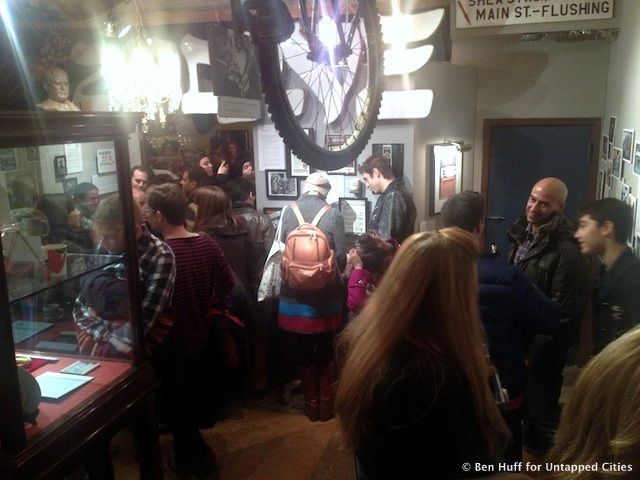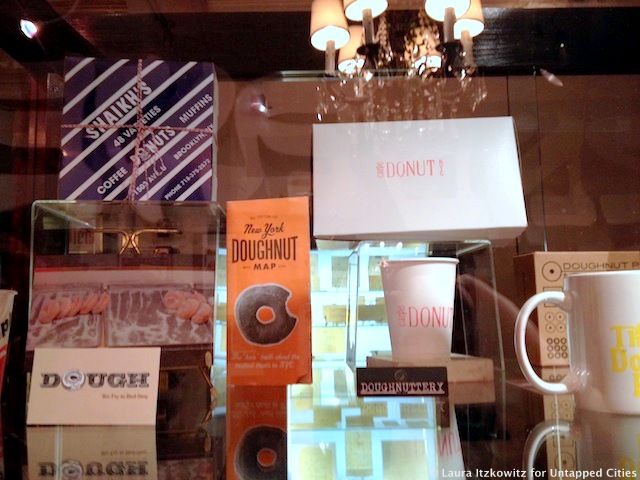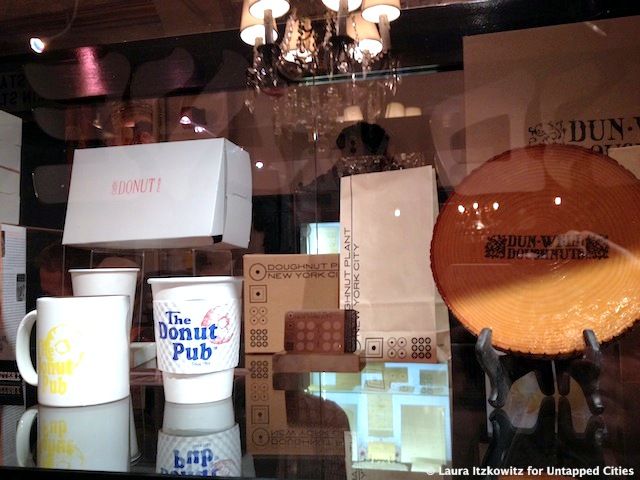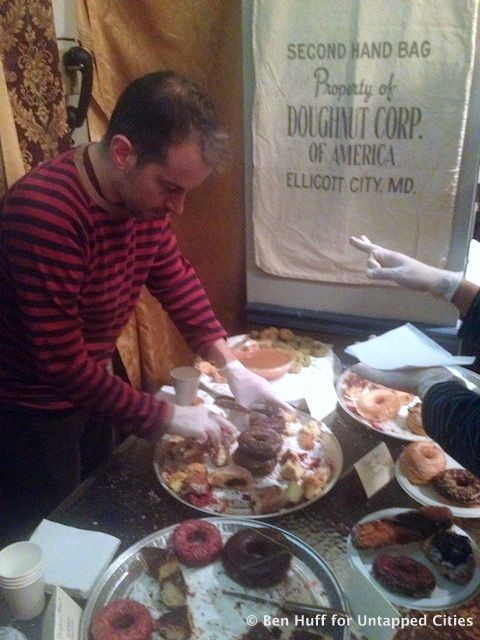Last-Minute NYC Holiday Gift Guide 🎁
We’ve created a holiday gift guide with presents for the intrepid New Yorker that should arrive just in time—



Would you try a “Donut Reducing Diet”? Though it sounds like a spoof of the Atkins diet–or any number of fad diets out there–Dr. J. Howard Crum hypothesized that a diet consisting solely of donuts would keep you satisfied enough to stick to it. He outlined the theory in his 1941 book, Beauty and Health: a Course in Loveliness. Julie Thomson, resident donut connoisseur and curator of the exhibit “Keep Your Eye Upon the Donut” at the City Reliquary in Williamsburg, scoured the internet to find the October 1941 issue of Woman’s Home Companion in which the ad for Dr. Crum’s book appeared.

We caught up with Ms. Thomson, who blogs about her donut-seeking adventures, at the opening party on Saturday. Though she says she has a particular personal attachment to donuts, she clearly isn’t the only one, judging by the crowd of people that showed up for the opening party. Though we’ve seen other exhibits about food, this is the first exhibit we’ve ever seen solely focused on donuts. “I hope it’s not the first,” she exclaimed, “because there should be others!”

Indeed, Ms. Thomson had no shortage of material to draw upon. The donut has a long and fascinating history in the U.S. and especially in New York City. The National Dunking Association was founded in the 1930s and had its headquarters on 42nd Street. During WWII donuts were brought to the battle front as “morale boosters”. The Donut Corporation of America promoted donuts with booklets full of recipes and games, like the aptly titled “How to Run a Successful Party“. But you’d have to go much farther back to trace the origins of the donut in New York City. The City’s first donut shop was opened by Anna Joralemon in 1673 on Broadway near Maiden Lane.

The exhibit isn’t all about donuts of times past, though. Thomson profiled several notable New York City donut shops, including Greenpoint’s own Peter Pan Donut & Pastry Shop, Dough in Bed-Stuy, the Donut Pub in Manhattan and several others. One wall displays photos and a text about each shop, and artifacts and ephemera are scattered throughout the room. One of Peter Pan’s distinctive retro uniforms hangs from the ceiling, as does a bicycle once used by Mark Israel of The Doughnut Plant to make deliveries. A glass case displays cardboard pastry boxes, mugs and to-go cups, and the New York Doughnut Map.

This type of exhibit is exactly why we love the City Reliquary so much. The tiny museum is known for its remarkable collection of NYC ephemera, including old subway tokens, vintage glass seltzer bottles, baseball portraits, artifacts from the 1939 World’s Fair, an old dentist’s chair and much much more. Here, the flotsam and jetsam of everyday life is elevated from the category of mere objects to relics. Many of the artifacts in the museum and in the donut exhibit already seem quaint. Yet for people who grew up here and have memories associated with these things, the City Reliquary reminds us that a mere taste of a donut dunked in coffee can become a Proustian moment opening up our minds to remembrances of times past.

Get in touch with the author @lauraitzkowitz and Julie Thomson @donutgrrl.
Subscribe to our newsletter